Walverwandtschaft, 2016
Elective (Whale) Affinities
Single show curated by Emilie Bruner for the Wiener Art Foundation at the galerie kunstbuero
(Vienna, April-May 2016 AT)
Works shown in the exhibition:
Die Zitronen-Wal-Seife (Lemon-Whale-Soap), 2016: installation comprised of black and white slide projection (80 frames), soundtrack reading excerpts of Francis Ponge's "Le Savon" and a lemon cent box (essence createad by Yogesh Perfumes Vienna), size variable
Walverwandtschaft - Studie 2, 2016: drawing on yellow transparent paper, 92 x 63,5 cm
Seifen-Mumien (Soap Mummies), 2016: two soaps in papier-mâché sculptures, 10 x 5 x 4 cm
Zitronen-Wal-Seifen mit Waschtisch (Lemon-Whale-Soaps with washbasin), 2016:
installation comprised of two soaps Whale Potatoe Soap & Whale without a Ta(i)l(e) Soap, Emaille washbasin with water, embroidered hand towel
Ironing Gesture, 2016: single slide projection, size variable, with anonymous photograph
Research Observations, 2002: Marine biology lab, Halifax, Canada: series of six black and white photographs, 20 x 30 cm
Spermwhales, 2016: listening station of track 1: excerpts of Emmett Williams speech– “A WHALE OF A TALE of the TALE OF A WHALE”, 1992; read by Ines Lechleitner, 05.37 min; track 2: recording of spermwhales, 0.30 min
Whale Potatoe, 2012: papier-mâché sculpture, 59 x 27 x 27 cm
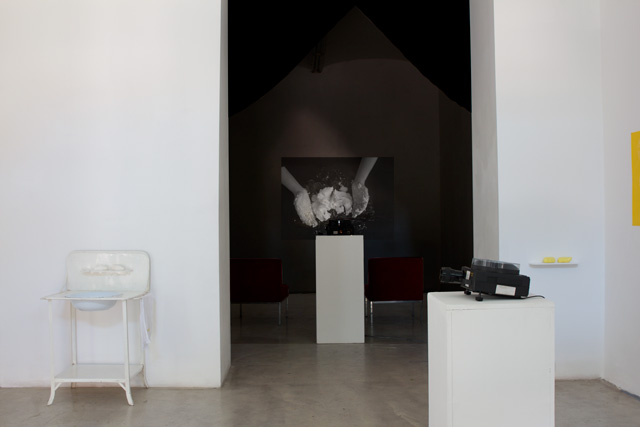
"Walverwandtschaft", installation view, galerie kunstbuero, Vienna, May 2016 AT
In Walverwandtschaft Ines Lechleitner explores the everyday object of Die Seife, the soap, through smell, texture, repetition and associations.
It is through the reading of Francis Ponge's book 'Le Savon' and his detailed descriptions of the soap that the process of metamorphosis started for her. Ponge describes the nature of the soap as one to serve and to disappear.
For the slide projection of the installation Die Zitronen-Wal-Seife Ines Lechleitner follows the process of molding particular shapes suggested by the gestures of the hands. The raw materials turn into natural recognizable shapes in order to disappear and change into another form. Each slide becomes a word within a story of transformation and memory. Ponge's reference to the soap as a "Chinese fish" that flips out of ones hand mirrors the appearance and disappearance of the image, as the full meaning stays impossible to grasp.
Attributing many of the aspects mentioned by Ponge to her own experience of searching for whales in Halifax in 2002, the artist recalls her false claim of spotting a whale, which turns out to be a stone. The soap being almost a stone, but with a scent.
In Die Zitronen-Wal-Seife the soap becomes a lemon which becomes a whale in order to turn into a soap and disappear. In order to preserve the soap's essence/soul by the ancient process of mummification, the hand-sized objects called Seifen-Mumien incapsulate and hide the soap which cannot morph but still holds a certain weight like a stone.
Through the ritual of kneading a soap and creating its suave a sexual aspect occurs calling up notions of masturbation, sperm and lost virginity. Purity is lost like a futile girl sitting in an old man's bath tub. The lemon scent of the soap on a washed body inscribes memories.
Filmed slide projection (4.56 min) of the installation Die Zitronen-Wal-Seife with sound excerpt, 2016
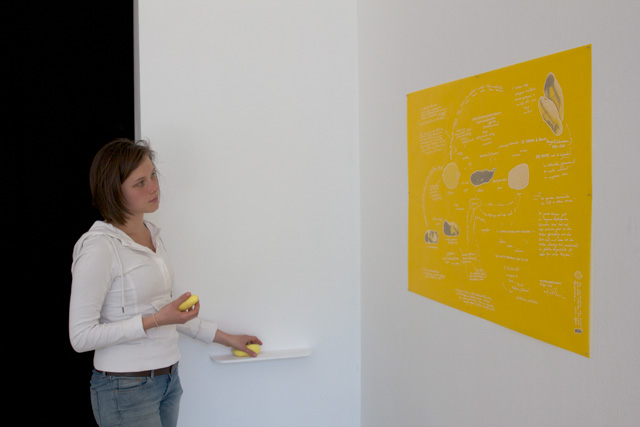
Installation view of Seifen-Mumien (Soap Mummies) and the drawing Walverwandtschaft - Studie 2.
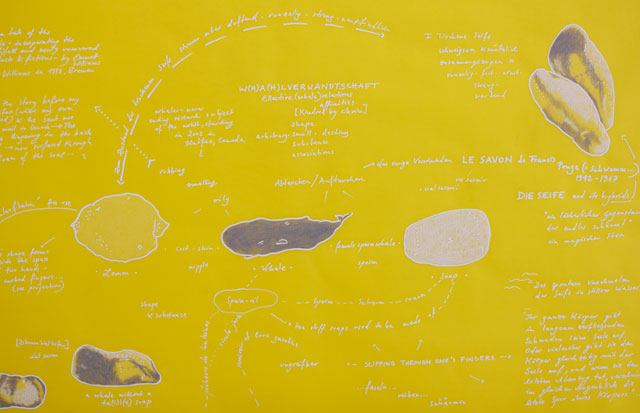
Walverwandtschaft - Studie 2, 2016: drawing on transparent paper. For magnification click on the image
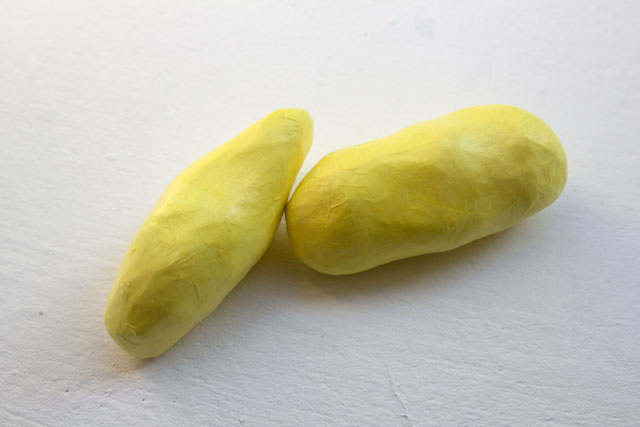
Seifen-Mumien (Soap Mummies), 2016: two soaps in papier-mâché sculptures.
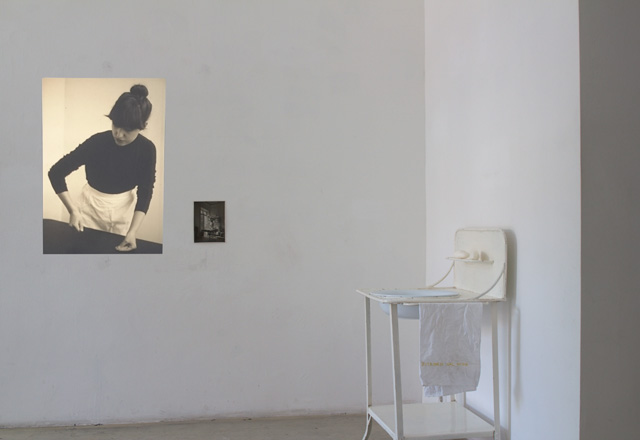
Installation view of the exhibition "Walverwandtschaft", showing Ironing Gesture, 2016 and Zitronen-Wal-Seifen mit Waschtisch (Lemon-Whale-Soaps with washbasin), 2016

Ironing Gesture, 2016: single slide projection with anonymous photograph
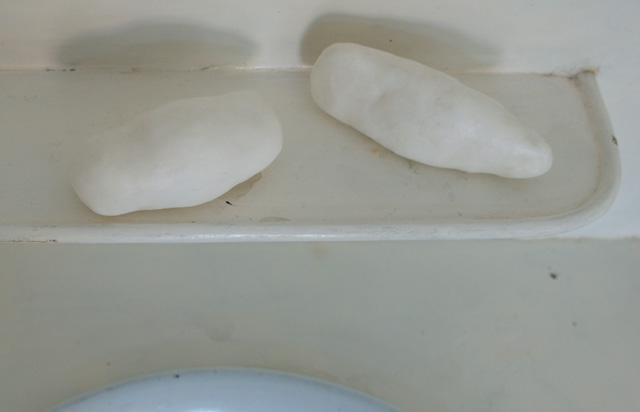
Detail view of Zitronen-Wal-Seifen mit Waschtisch (Lemon-Whale-Soaps with washbasin), 2016
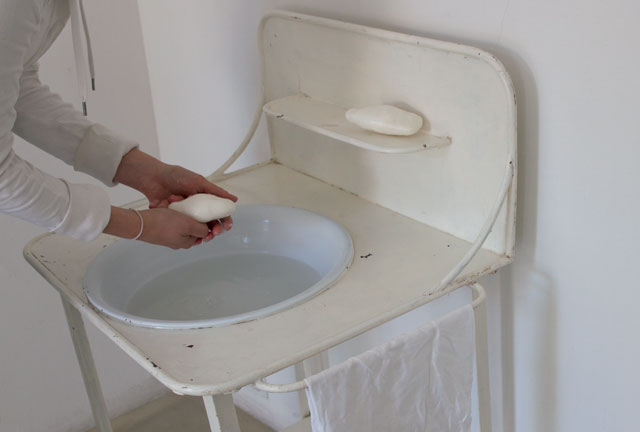
Installation view of Zitronen-Wal-Seifen mit Waschtisch (Lemon-Whale-Soaps with washbasin), 2016
Before Ines Lechleitner's research on whales in Canada in 2002 begun, Emmett Williams had told her the WHALE OF A TALE of the TAIL OF A WHALE incorporating the history of W(H)ALE and newly uncovered DUCHAMPIAN FACTS AND FICTION and later on sent her the script of his related speech as a transcript. The story presumably told by Duchamp inspired by Apollinaire resurfaced during the process of handling the soap.
Emmett William's word games, inspiration and freedom with language influenced the artist's pleasure of shaping objects and called to mind the communication of sperm whales.
You have to get yourself dirty before getting clean. You have to get rid of soap.
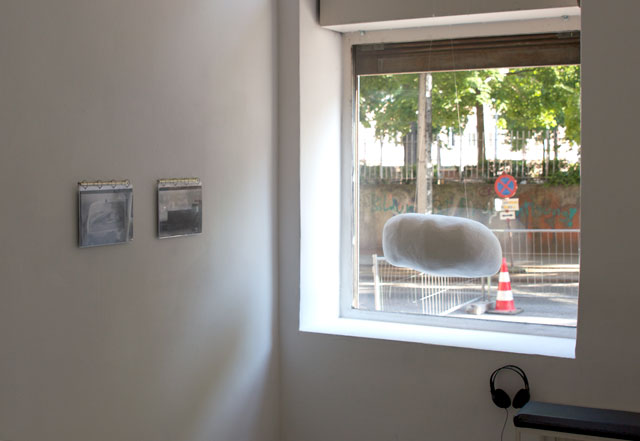
Installation view of Research Observations, 2002 (photographs), Whale Potatoe, 2012 (papier-mâché sculpture) and Spermwhales, 2016 (listening station).
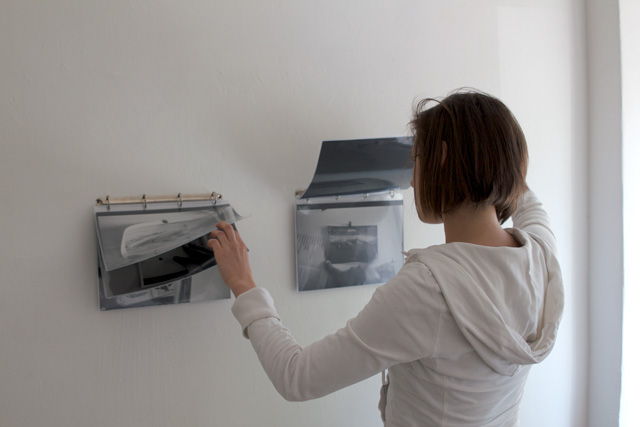
Installation view of Research Observations, 2002
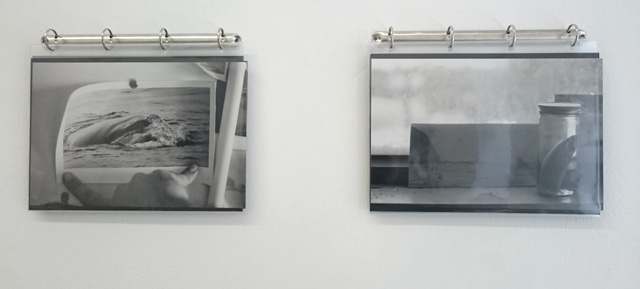
Research Observations, 2002
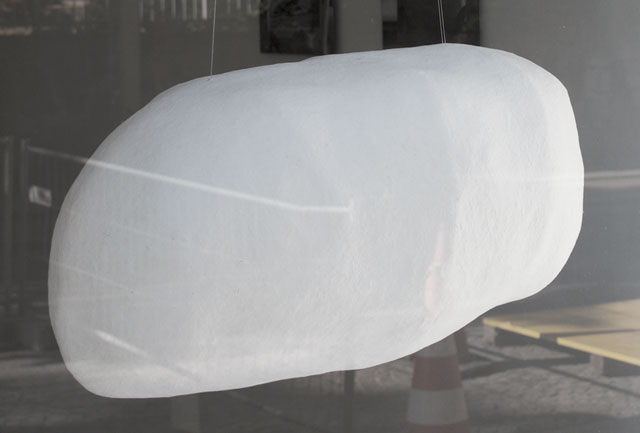
Whale Potatoe, 2012
Audio: Spermwhales, 2016: track 1: excerpts of Emmett Williams speech– “A WHALE OF A TALE of the TALE OF A WHALE”, 1992 (© The Estate of Emmet Williams, H&H Editions Schibrok and Wolfgang Hainke), read by Ines Lechleitner, 05.37 min;
track 2: recording of spermwhales, 0.33 min
This work would not have been possible without the collaboration and support of Claudia De la Torre and Emilie Bruner.
Special Thanks to Francis Ponge, galerie kunstbuero, Wiener Art Foundation and Amer Abbas, Ann Noel and Emmett Williams as well as Wolfgang Hainke, Yogesh Kumar, Barbara Senftner.
WHALE OF A TALE of the TAIL OF A WHALE incorporating the history of W(H)ALE and newly uncovered DUCHAMPIAN FACTS AND FICTION © The Estate of Emmet Williams © H&H Editions Schibrok and Wolfgang Hainke
Lemon Essence © YOGESH perfumes / www.dasparfum.com
The program of the Wiener Art Foundation is kindly founded by the BKA.

Night view of the exhibition "Walverwandtschaft" at galerie kunstbuero, Vienna, May 2016












